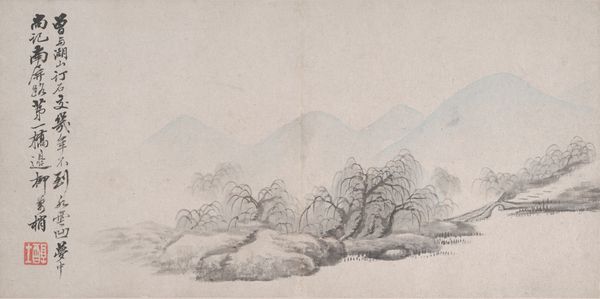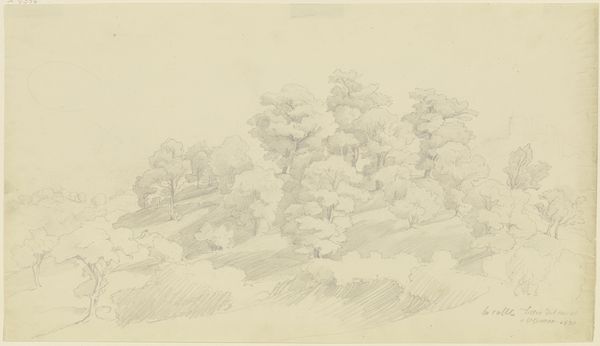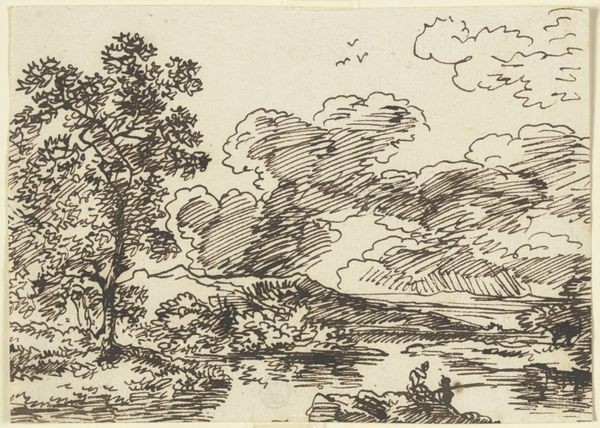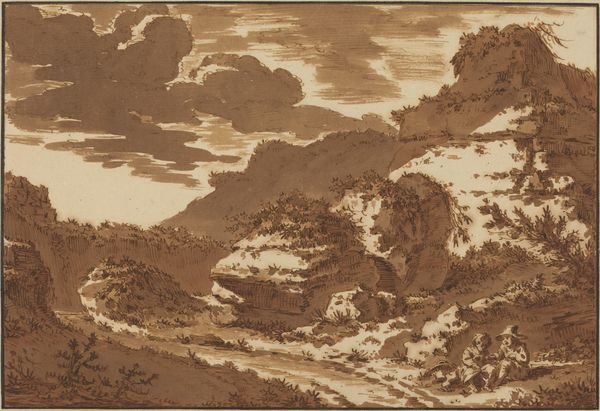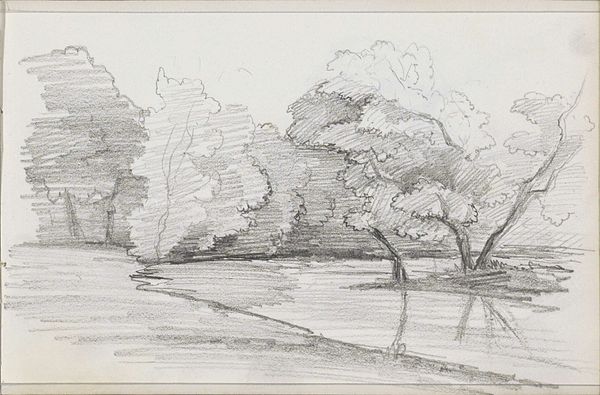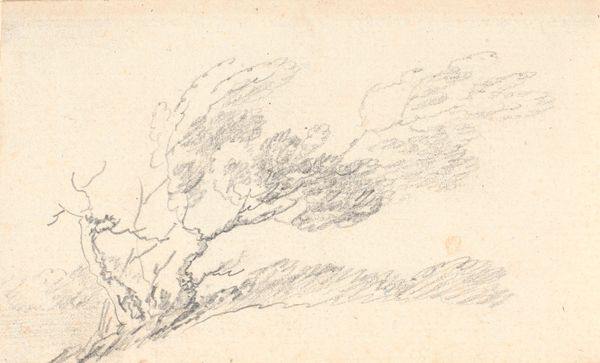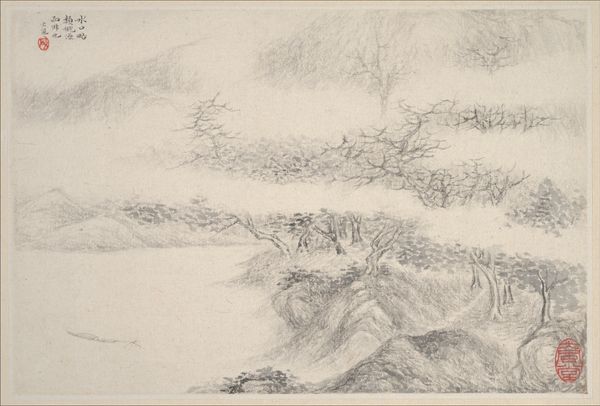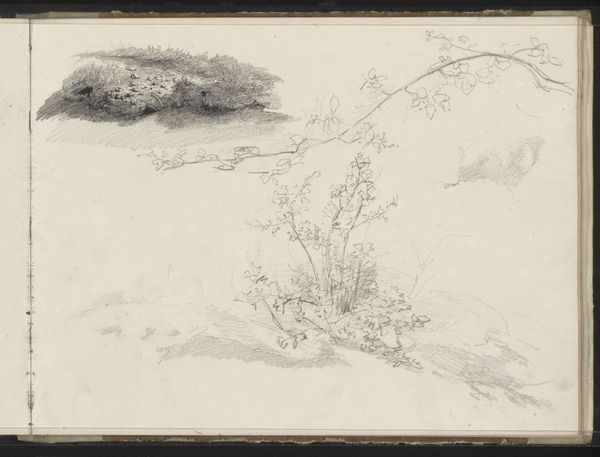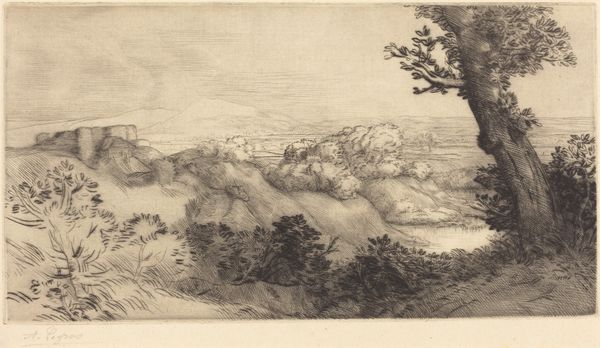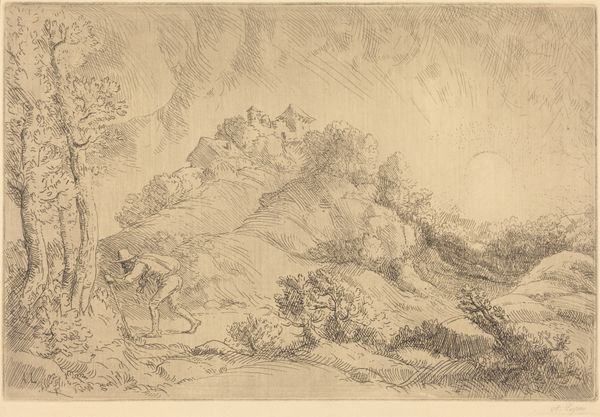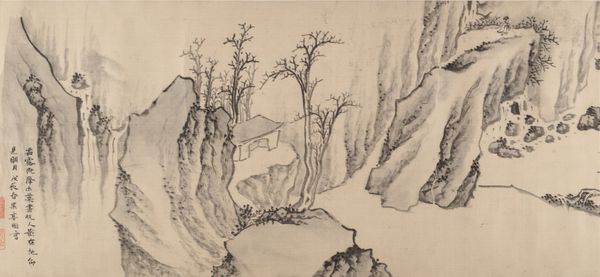
painting, paper, ink
#
painting
#
asian-art
#
landscape
#
paper
#
ink
#
geometric
#
realism
Dimensions: Ten paintings by Wang Hui (a–j): 8 5/8 x 13 1/4 in. (22 x 33.8 cm); two paintings by Wang Shimin (k, l): 10 x 13 in. (25.4 x 33 cm)
Copyright: Public Domain
Editor: We're looking at Wang Hui's "Landscapes after old masters," created between 1674 and 1677, rendered in ink on paper. It has a wonderfully calm, almost dreamlike quality, yet its realism is undeniable. What catches your eye about this particular piece? Curator: Immediately, I am drawn to the structural integrity of the composition. Note how the artist meticulously organizes the space, using layered mountain ranges to create depth, drawing the eye gradually into the scene. It is as if the artist has used semiotics to embed the key features, one layer at a time. Editor: Semiotics in the rock formations? That's a new idea to me. Can you unpack it a bit? Curator: Precisely. Consider the contrast between the solid, weighty forms of the mountains and the ethereal, almost dissolving quality of the ink washes used to depict them. This deliberate juxtaposition activates a visual tension. And if we consider these peaks as distinct formal elements, what relationships can we trace between them? Editor: I see how the peaks create different layers that provide depth. It also looks like the mountain arrangement cradles a small village with buildings in the distance and an active treeline closer to the viewer, making for both balance and contrast in its components. Curator: Yes, exactly. Now observe the geometric precision in the village layout contrasted to the unconstrained representation of natural formations. What is conveyed through that dialogue? Editor: It strikes me how the piece's impact comes entirely from these basic arrangements of geometric shapes and calculated composition. Without this structured rendering, I don't think this landscape would evoke this sense of meditative realism that makes the viewing experience feel complete. Curator: I agree, seeing the geometric contrast is how we begin to understand Wang Hui’s ingenious craftsmanship. It demonstrates a dedication to artistic structure through line and composition that supersedes realistic representation.
Comments
No comments
Be the first to comment and join the conversation on the ultimate creative platform.
